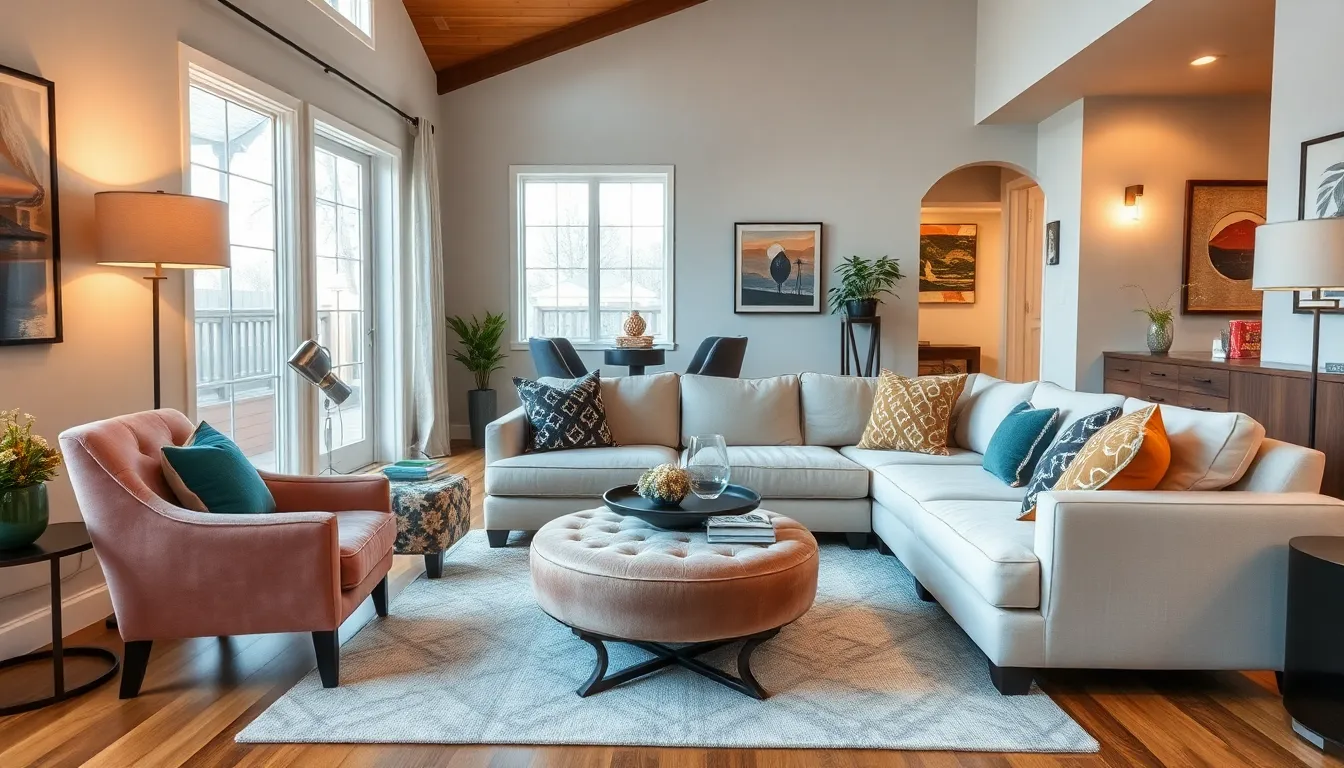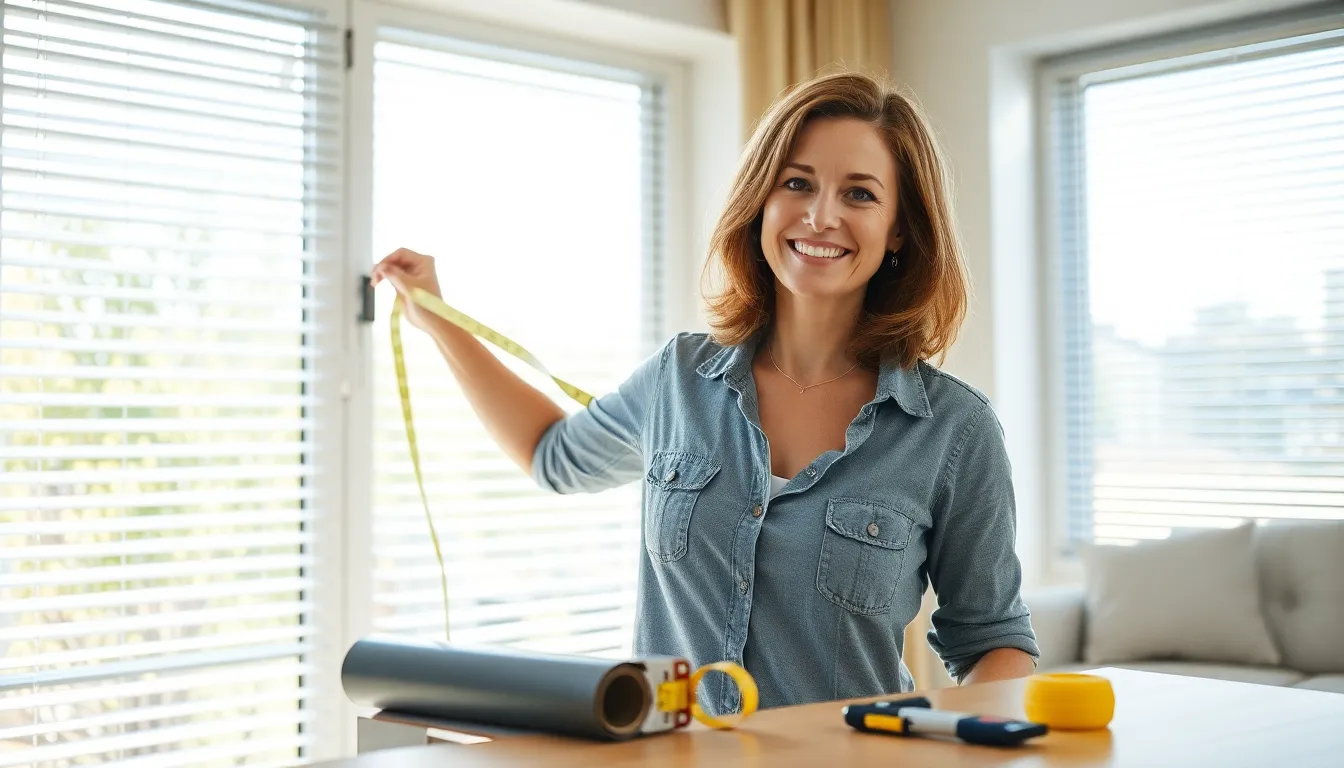Choosing soft furniture can feel like navigating a maze of fluff and fabric. With options ranging from plush sofas to cushy armchairs, it’s easy to get lost in the sea of choices. But fear not! The right soft furniture can transform a house into a cozy haven where comfort reigns supreme and Netflix binges become a lifestyle.
Table of Contents
ToggleOverview of Soft Furniture Choices
Selecting soft furniture involves numerous appealing options. Sofas remain a popular choice due to their versatility and comfort. Sections, like sectional sofas, allow for flexible seating arrangements, adapting well to various room sizes. Armchairs offer an intimate seating experience, providing support and style in smaller spaces.
Various upholstery materials enhance soft furniture options. Fabric choices, such as cotton and linen, offer breathability and comfort, while leather provides durability and a sleek look. Microfiber stands out for easy maintenance and resistance to stains. In addition, blending materials can enrich aesthetics and functionality.
Color selection plays a crucial role in establishing a desired atmosphere. Neutral tones, like beige or gray, create a calming backdrop, while bold colors bring vibrancy and personality to a space. Matching soft furniture colors with existing decor ensures a cohesive design throughout the room.
Style preferences also influence soft furniture choices. Traditional designs often feature ornate details and rich textures, appealing to those who appreciate classic looks. Modern styles emphasize clean lines and minimalism, perfect for contemporary settings. Eclectic combinations can reflect individual tastes, allowing for creativity.
Ultimately, considering personal lifestyle needs is essential when choosing soft furniture. Families may prioritize durability and stain-resistant fabrics, while individuals may lean towards aesthetics and luxury. Balancing comfort, style, and functionality leads to a harmonious living environment that welcomes relaxation and social gatherings.
Types of Soft Furniture

Various soft furniture options enhance comfort and style in living spaces. Key choices include sofas, armchairs, and ottomans. Each piece serves a distinct purpose while contributing to the home’s overall aesthetic.
Sofas and Sectionals
Sofas, especially sectionals, provide ample seating for gatherings. Flexibility in configuration allows individuals to adapt the layout according to spatial needs. Sectionals also offer features like reclining seats, which boost relaxation. Styles vary from contemporary designs to classic upholstery, ensuring options suit diverse tastes. Various colors, ranging from neutral shades to vibrant hues, help create a desired ambiance. Durable materials, including microfiber and leather, stand up to everyday use, making sofas practical choices for busy households.
Armchairs and Recliners
Armchairs create intimate seating areas that foster conversation. Compact designs ensure they fit well into smaller spaces, while larger options provide plush comfort. Recliners offer added convenience with adjustable positions for personalized relaxation. Many armchairs come in a range of fabrics, such as velvet and linen, contributing to both comfort and style. Unique designs, like wingback and mid-century modern, cater to individual preferences. Color choices also play a significant role, with options available in every palette to match existing decor.
Ottomans and Poufs
Ottomans provide versatile options for footrests or additional seating. Many designs feature storage capabilities, enhancing functionality in smaller rooms. Poufs, while smaller, serve similar purposes and add a playful element to decor. Both ottomans and poufs come in various styles, from bohemian to sleek modern, appealing to diverse tastes. Materials range from durable fabrics to leather, promoting easy maintenance. Their colors often complement existing furniture, aiding in cohesive design while providing comfort.
Materials Used in Soft Furniture
Selecting materials plays a crucial role in soft furniture choices. Various options cater to different preferences and needs.
Fabric Options
Cotton offers breathability and comfort, making it a popular choice for everyday use. Linen stands out for its durability and texture, enhancing both style and function. Microfiber emerges as a low-maintenance option, resistant to stains and easy to clean. Velvet provides a luxurious feel, adding elegance to any piece. Each fabric option brings unique qualities, ensuring that buyers find the perfect match for their style and lifestyle.
Leather Choices
Leather combines sophistication with durability, appealing to those who seek luxury in their soft furniture. Full-grain leather stands out for its natural characteristics, providing a timeless aesthetic. Top-grain leather offers a balance of affordability and quality, retaining the essence of genuine leather. Faux leather presents a budget-friendly alternative while mimicking the look and texture of traditional leather. Each leather choice provides distinct benefits, aligning with various preferences and budgets.
Eco-Friendly Materials
Eco-friendly materials increasingly attract buyers looking for sustainable options. Organic cotton, grown without harmful chemicals, ensures a healthier environment. Recycled polyester reduces waste while offering durability and comfort. Bamboo fabric, known for its rapid growth and minimal resource use, presents another appealing sustainable choice. Incorporating these materials into soft furniture reflects a commitment to both style and environmental responsibility.
Design and Style Considerations
Choosing the right soft furniture involves careful thought about design and style elements. These factors not only impact aesthetics but also influence functionality and comfort.
Modern vs. Traditional Styles
Modern styles emphasize clean lines and minimalist designs, appealing to contemporary tastes. Many modern sofas feature sleek silhouettes and neutral colors. Traditional styles, on the other hand, often highlight ornate details and classic patterns, catering to those who appreciate timeless elegance. This style includes plush upholstery and intricate carvings. When selecting soft furniture, it’s essential to align the chosen style with existing home decor. Blending modern elements with traditional pieces can create a unique, harmonious look.
Color and Pattern Selection
Color significantly affects a room’s ambiance. Neutral shades like beige and gray provide a calming backdrop, making them versatile choices for soft furniture. Bold colors, such as deep blues or vibrant reds, add personality and make statement pieces. Patterns can also enhance a space’s character; geometric prints contribute a modern touch, while floral designs evoke a traditional feel. Selecting fabrics with colors and patterns that reflect personal preferences ensures the furniture complements the overall decor effectively. Coordinating these selections enhances visual harmony in any living area.
Maintenance and Care for Soft Furniture
Maintaining soft furniture ensures longevity and preserves aesthetics. Regular cleaning and protection methods keep upholstery looking its best.
Cleaning Tips
Vacuum soft furniture weekly to remove dust and debris, preventing buildup. Use a microfiber cloth dampened with appropriate cleaning solutions for stains, applying it gently to avoid damage. Consider spot testing in an inconspicuous area prior to application. Follow manufacturer recommendations for cleaning products specifically designed for different fabrics. For deeper cleanings, hire professional services every 1 to 2 years, especially for upholstery that experiences heavy use.
Protecting Against Wear and Tear
Position furniture away from direct sunlight to prevent fabric fading over time. Use coasters and trays to protect surfaces from spills and scratches. Consider fabric protectors that create a barrier against stains and dirt, extending the life of upholstery. Rotate cushions regularly to distribute wear evenly, promoting uniformity in appearance. Employ slipcovers for easy maintenance, especially in homes with children or pets, offering a protective layer that can simply be washed.
Choosing the right soft furniture is essential for creating a comfortable and inviting home. With a variety of options available in terms of style, material, and color, it’s possible to find pieces that not only enhance comfort but also reflect personal taste.
Considering factors like functionality and maintenance can lead to selections that stand the test of time. By thoughtfully integrating these elements into the living space, individuals can achieve a harmonious environment that supports both relaxation and social interaction. Prioritizing quality and care ensures these investments remain beautiful and functional for years to come.








